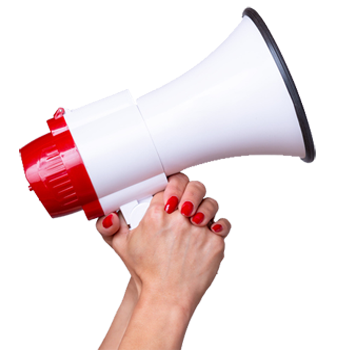Make all your Customer Touch Points help grow your business
April 20th, 2009 by Heather MaloneyIn our edition of eNudge News describing 4 Keys for Business Growth in 2009, the 3rd key was:
Continue to grow your List by promoting your communications in all your customer touch points. This is very important as it does two things: 1/ ensures that you keep focused on your communications with your customers. If your emailing / sms list is continuing to grow there will be less chance that you will tire of sending your messages, and 2/ adds new prospects to the start of the sales process. Most people need to feel that they trust you and understand what you can do for them before they will be ready to buy.
Here are 10 ideas for ensuring you are making the most of all your customer touchpoints:
- Invoices – one of the most neglected touchpoints in terms of promoting the benefits of your products and services. You should use a portion of your invoices to:
describe the benefits your products or services offer, or
draw attention to other products that the customer is not currently purchasing, or
promote special offers. - At point of sale – supermarkets do this with the chocolate bars and magazines sitting at the check outs. If you have a shopping cart facility on your website, are you suggesting related products to your customers just before they checkout? Amazon has been doing this for years. If you have a retail store, ensure that your sales staff ask customers if they are on your mailing list so that they know when the latest products come into store, and so that they hear about sales.
- New Customer Telephone Enquiries – when the phone rings and it’s a new enquiry, part of your standard process for handling the enquiry should be to ask if you can add the person to your mailing list. Make sure you describe the benefits of receiving the messages, and how frequently they will be delivered. If you describe these things and then ask for permission (and the person’s email address), if the caller is at all interested in your products or services 9 times out of 10 they will be happy to be placed on your mailing list.
- Meetings with Prospects – at your meeting to discuss a potential new client’s requirements, make sure you ask them if they would like to go on your mailing list. Again… advise them of the benefits and frequency of messages, and most times they will be happy to be added to your list. This gives you further opportunity to build trust with the prospect.
- Written Proposals – make sure you add a section at the end of your proposal that promotes other products / services you provide, which may also be of interest to the prospect. Describe the benefits of being added to your mailing list in the proposal, which will also act as a trigger for you to ask for their permission to be added.
- Business Cards – if there’s space, include your unique selling proposition and how to sign up for your mailing list perhaps on the back of your card. You can also have cards printed that have a perforated, tear off section that a prospect can fill in to give you permission to add them to your list. As you hand your card to a customer or prospect, that will also act as a prompt for you to ask the consent question.
- Letterhead and other Stationery – include a statement of the benefits of your products and services, and a web address to sign up for your newsletter – again describing in brief the benefits and timeframe for sending.
- Printed / Online Directory listings – depending on available space, your slogan or statement of benefits of working with your organisation should be included in the listing.
- Meetings Prospects at Networking Events – if you meet a person who is genuinely interested in your products or services, but might not be quite ready to transact with you yet, ask them if they would like to be added to your mailing list to hear about what your other customers are doing / hear about special offers etc.
- Front page of your Website – this seems obvious, but many businesses who have a mailing list don’t promote it well on their website. It should be on the front page of your site, allowing a visitor who is interested in your offering but not yet ready to transact, to still connect with you.
Out of 10, how many ideas are you already employing? What have we missed?







